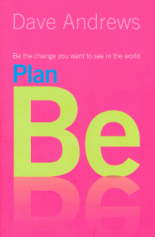Stuff White People Do
How do justice-focused whites fit into the struggle against racism in America?
| By Micah Uetricht | September 22, 2010 |
When confronting racism in the United States, past and present activists for justice have repeatedly run into a problem: white people.
In the struggle against a system created to benefit whites–or at least some of them–where do justice-focused whites fit? The civil rights movement confronted the question repeatedly: The Student Nonviolent Coordinating Committee expelled all whites in 1965, arguing that blacks had to head their own organizations; several years later, the Weather Underground concluded that the best way to support the struggles of people of color was to become clandestine armed revolutionaries. Few detonate bombs in the name of equality these days, but many still struggle with the idea of strong white racial justice activists.
During the last two decades, “whiteness” has emerged as a field of scholarly study that examines what it means to be a member of the world’s dominant racial group. The resulting literature rarely leaves readers feeling rosy about whites and their ability to engage in meaningful racial justice work. Derrick Bell’s Faces at the Bottom of the Well: The Permanence of Racism contends that blacks will forever remain at the brink of obliteration by whites due to a vested interest in anti-black racism. It’s tough to emerge from that feeling like there’s much that can be done–or is worth doing–to counter racism. Tim Wise’s White Like Me, a memoir exploring how the author has unfairly benefited from white privilege in his life, left this white reader in a mild state of personal crisis for several years after first reading it as a teenager.
Maybe the truth should hurt, but it’s difficult to find one’s bearings after getting slammed with the overwhelming reality of white racism–which makes Mark R. Warren’s new book Fire in the Heart: How White Activists Embrace Racial Justice (Oxford University, September) a heartening read. Warren, a professor at Harvard, interviews 50 white activists who share a commitment to uprooting racism in America, and examines the experiences that led them to work for justice.
The reader quickly senses that the author is an unshakable optimist. The profiled activists, including educators, community organizers and criminal justice advocates, vary widely in motivation and justification for their actions–some of which seem problematically paternalistic at times. But Warren is uninterested in exposing whites activists’ shortcomings. What matters is the willingness to act.
The interviewees stress that while ending racism is their goal, they struggle with how to confront other whites’ racist actions while trying to engage them in the struggle for justice. Christine Clark, a Maryland educator, says she wants to “make [other whites] allies, not enemies. That doesn’t mean don’t confront. … But it does mean that your goal is to [make whites want] to join with people of color … against racism, as opposed to being made the enemy.”
This seems to be Warren’s purpose with Fire in the Heart: By examining how this group of white activists came to dedicate their lives to fighting for racial justice, he wants to understand how more whites can be moved to do the same. Early in the book, he notes that the major problem facing America is not overt racism–few whites would say they disagree with achieving racial justice–but white apathy. The task, then, is to move more whites from apathy to action.
Warren stresses the importance of activating the values, like religious upbringings or liberal democratic ethics, most whites hold that are violated by the reality of racism. But without opportunities to plug into struggle and engage in multiracial community-building, whites made aware of racial inequality can become simple “do-gooders”; or worse, they can explain racism away by any number of victim-blaming cultural deficiency arguments floating around the culture.
Warren appears to have done his interviews before the 2008 election, leading to an unfortunate absence of discussion among the activists of our first African-American president. One wonders how his interviewees, working in under-funded schools, jobless communities and juvenile jails packed with young men of color, would evaluate Obama’s performance as president.
The lessons Warren draws from the activists’ stories are sometimes obvious–of course a semester studying in impoverished parts of Mexico proves eye-opening and morally shocking. Still, those anecdotes are often powerful. He includes the story of Jim Capraro who, as a teenager in Chicago, witnessed blacks in a fair housing march being pelted with rocks and bottles and confronted by swastika-adorned neo-Nazis. He cites the experience as an “epiphany,” saying, “Everything I had learned or was led to believe, I thought was a lie.” Decades later, Capraro still lives and organizes in the neighborhood.
“Racial privilege may be a complex reality that white people need to grasp,” Warren writes. “However, stressing privilege as a strategy to engage whites … focuses on the narrow and short-term benefits whites receive. … Alone, it seems to engage shame and guilt rather than anger at injustice and hope for a better future.”
A growing body of literature critiques white privilege and brings whiteness out of the invisibility in which it has existed–in white minds, at least–for centuries. But too often, confronting the privileges of whiteness and their own racism has led to paralysis.
“The surest and most dependable antidote I have had over the years for despondency, discouragement, and being low,” says John Heinemeir, a white Lutheran pastor of majority-black churches, “is to go into the local community and talk to people.”
As Heinemeir and the other whites interviewed in the book make clear, the only way to alleviate that guilt is to act. Warren’s book salutes those who do, and offers ideas to get other whites to join in.
Micah Uetricht, a former In These Times editorial intern, is a staff writer for the Chicago websiteGapersBlock.com. He lives in Chicago.



